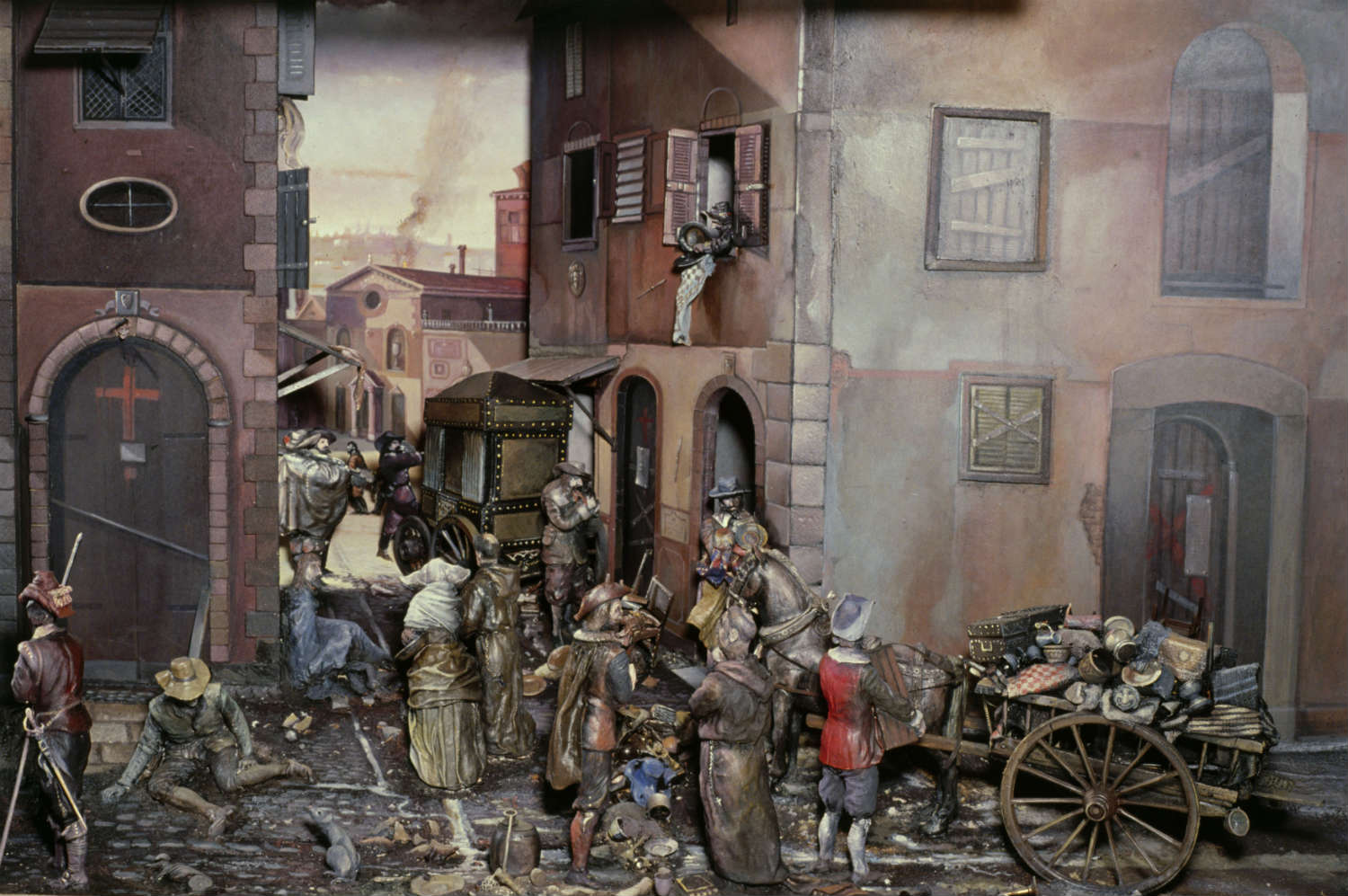
Game of Thrones doesn’t tell you the half of it. Life during the medieval ages was nasty, brutish and short. That was especially true during what became known as the Black Death. The widespread outbreak of plague struck between 1347 and 1351, killing tens of millions of people, resulting in the loss of 30 to 50% of the region’s population. The disease itself was horrific. “In men and women alive,” wrote the Italian poet Giovanni Boccaccio, “at the beginning of the malady, certain swellings, either on the groin or under the armpits…waxed to the bigness of a common apple, others to the size of an egg, some more and some less, and these the vulgar named plague-boils.” And it seemed to strike indiscriminately and without warning. People could be healthy in the morning and dead by evening.
The upside, if you can call it that, is that the plaque left in its wake populations that were healthier and more robust than people who existed before the plague struck, according to a new study published today in PLOS ONE. “The Black Death was a selective killer,” says Sharon DeWitte, a biological anthropologist at the University of South Carolina and the author of the paper. “And after the Black Death ended, there was actually an improvement in the standard of living.” The plague was natural selection in action.
In a way, that’s a marker of how brutal the medieval era was. It took a serial killer of a plague to actually bring about an improvement in living conditions. If that sounds counterintuitive, think about how life might have changed after half of Europe’s population died off. Suddenly there was a dramatic drop in the number of able-bodied adults available to do work, which meant survivors could charge more for their labor. At the same time, fewer people meant a decreased demand for foods, goods and housing—and as a result, the prices for all three dropped. By the late 15th century, real wages were three times higher than they were at the beginning of the 14th century, before the plague struck. Diets improved as employers were forced to raise wages and offer extra food and clothing to attract workers. As a result, the money spent per capita on food in the wake of the Black Death actually increased. “People were able to eat more meat and high-quality bread, which in turn would have improved health,” says DeWitte.
But the clearest evidence that people were healthier after the Black Death than they were before it comes in the bodies themselves. DeWitte looked at skeletal samples taken from medieval cemeteries in London both before the plague and after it. She found that post-Black Death samples had a higher proportion of older adults, and that morality risks were generally lower in the post-Black Death population than before the epidemic. In other words, if you were strong and lucky enough to survive one of the deadliest epidemics in human history, you were probably strong enough to live to a relatively ripe old age. And since the Black Death was so widespread, that was true for the surviving population as a whole.
Earlier studies looking at historical documents like diaries, letters and wills from the time period had shown conflicting results, but that kind of data only covers the very small part of the population that was literate, male and relatively well off. The advantage of DeWitte’s grave-combing bioarchaeological research methods is that they encompass a much more representative swath of the medieval population. “This provides information about the people who are missing from historical documents, including women and children,” says DeWitte. Not everyone in medieval London left a will behind—but everyone left a corpse.
So for survivors, life after the Black Death would have been at least a little less nasty, brutish and short than life before it. But that doesn’t mean the survivors were really the lucky ones. The Black Death was a period of unremitting horror and terror, the likes of which we can’t imagine. No one knew how the disease spread, or how to treat it. Popular but gruesome methods like blood-letting or boil-lancing would have been counterproductive at best, assuming victims could find anyone to treat them. Doctors abandoned their patients for fear of infection, and priests even refused to give last rites to the dying—an appalling dereliction given medieval fears of eternal damnation. Even animals like sheep, cows and pigs fell victim to the disease. “The people who survived the Black Death would have lost everyone they knew,” says DeWitte. “They’re the people I feel sorry for.” If the Black Death really was natural selection at work, it was the cruelest form imaginable.
More Must-Reads From TIME
- The 100 Most Influential People of 2024
- The Revolution of Yulia Navalnaya
- 6 Compliments That Land Every Time
- What's the Deal With the Bitcoin Halving?
- If You're Dating Right Now , You're Brave: Column
- The AI That Could Heal a Divided Internet
- Fallout Is a Brilliant Model for the Future of Video Game Adaptations
- Want Weekly Recs on What to Watch, Read, and More? Sign Up for Worth Your Time
Contact us at letters@time.com